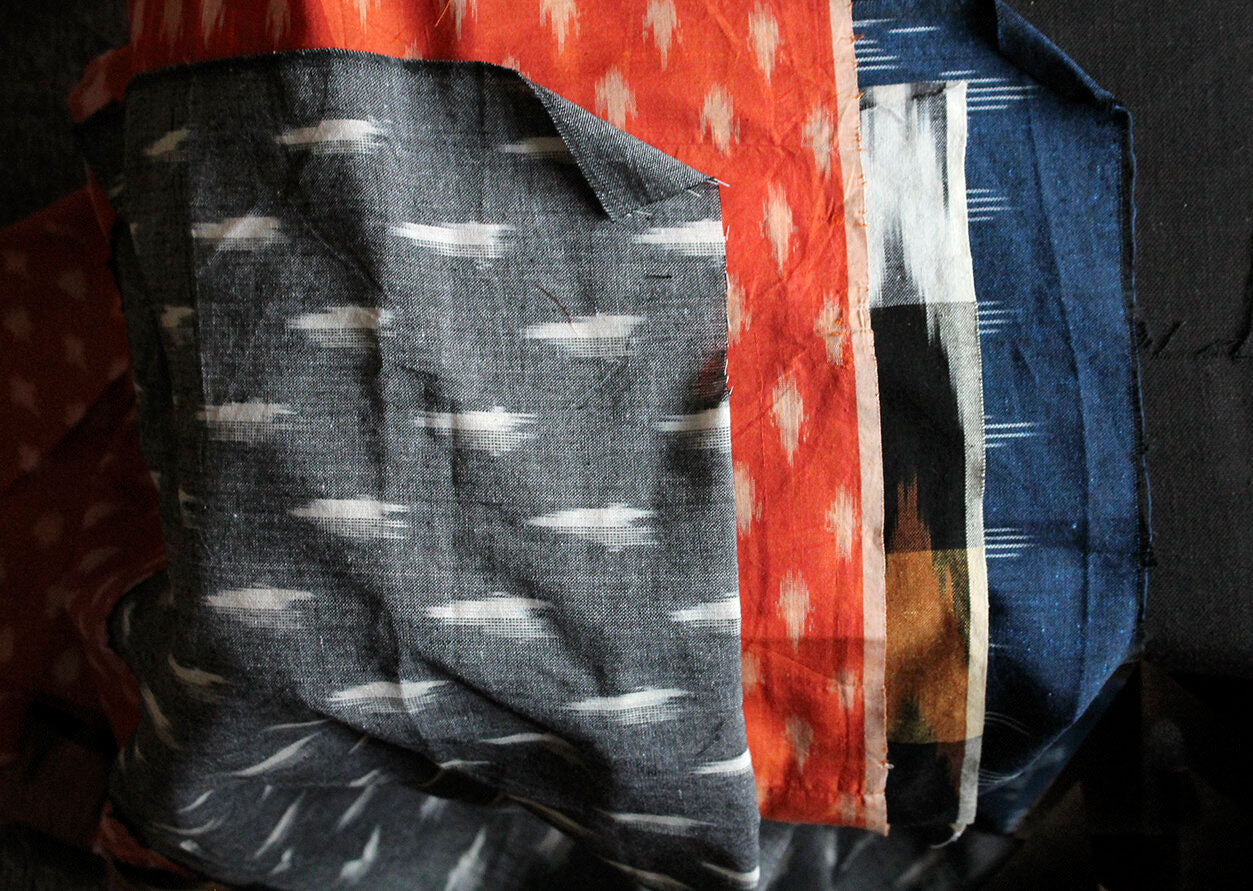We are closed this Easter bank holiday weekend. Any orders placed over the weekend will be processed when we return on Tuesday.

Ikat
02 January 2020Creating ikat fabrics is a complex technique that requires skill, patience and precision. Yarns are laid out and a pattern is planned and drawn onto the yarns. The yarns are then bound tightly and precisely in certain areas to create the resist. Once the yarns are dyed these bindings are removed and the process may be bound and dyed again to create multi-coloured designs. The yarns are then lined back up in the correct order and woven into a complete pattern. The characteristic blurriness is the inevitable result of the weaver lining up the yarns after they’re dyed to create the intended pattern.
 .
.
The weaving of ikats is a long and intricate process, and there are actually 3 different types of ikat that require varying levels of effort;
Warp ikats are created when the warp yarns are dyed using the ikat technique and the weft yarns are left plain or dyed a solid colour.
With weft ikats it’s the weaving of weft yarn that carries the dyed patterns. Weft ikats are harder and slower to weave than warp ikats because the weft yarns must be carefully adjusted with every pass of the shuttle to maintain the clarity of the design.
Double ikat is the most difficult and intricate technique in which both the warp and the weft yarns are resist-dyed prior to weaving. It is only produced in three countries - India, Japan and Indonesia.
The beauty of ikat lies in the impossibility of creating a perfectly crisp and clean pattern. Despite how skilled the weavers are there will always be variables during every stage of the process. The resisting binds may fail, the dyes may bleed and the yarns may not line up perfectly. But as with all hand made things the imperfections add to the character of the cloth and the resulting blurred edges of the patterns create a sense of movement.
Visit our Ikat collection here.